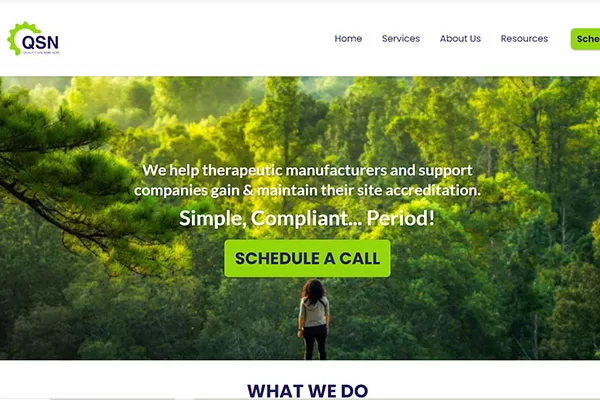Average to Fortune specialises in Wealth generation and the creation of personal passive income. If you are after a Home Business to run on your own terms, check out Average to Fortune. We have created a lead generation website to help them find more like minded people seeking financial freedom.
Visit their website here
Lead generation-focused websites are a cornerstone of modern marketing strategies, serving as the primary tool for capturing potential customers’ interest and converting them into leads. These websites are meticulously designed and optimized to attract targeted traffic, engage visitors, and encourage them to take specific actions, such as signing up for a newsletter, downloading a resource, or requesting a consultation. In this discourse, we will explore the key components, strategies, and best practices for creating effective lead generation-focused websites.
Understanding Lead Generation Websites:
Lead generation websites are designed with the sole purpose of acquiring contact information from visitors who have shown interest in a company’s products or services. Rather than focusing solely on direct sales, these websites prioritize building relationships with prospects and nurturing them through the sales funnel until they are ready to make a purchase decision.
The primary goal of a lead generation website is to capture leads, which are individuals or companies that have expressed interest in what the business offers. These leads are typically collected through forms or landing pages where visitors provide their contact information in exchange for something of value, such as a whitepaper, webinar, or free trial.
Are You after a new Lead Generation Website?
- Compelling Offer: A lead generation website begins with a compelling offer that entices visitors to take action. This could be a free resource, a limited-time discount, or access to exclusive content that addresses the pain points or challenges of the target audience.
- Clear Call-to-Action (CTA): Every page on a lead generation website should have a clear and prominent call-to-action that prompts visitors to take the desired action. Whether it’s filling out a form, subscribing to a newsletter, or downloading a guide, the CTA should be compelling and aligned with the offer.
- Optimized Landing Pages: Landing pages are critical components of lead generation websites, as they serve as the entry points where visitors provide their contact information in exchange for the offer. These pages should be optimized for conversion, with concise copy, compelling visuals, and a simple, user-friendly form.
- Lead Capture Forms: Lead capture forms are where visitors provide their contact information to access the offer. These forms should be strategically placed on landing pages and optimized to minimize friction and maximize conversions. Keep the form fields minimal, asking only for essential information, and consider using progressive profiling to gather additional details over time.
- Compelling Content: High-quality content is essential for attracting and engaging visitors on a lead generation website. From blog posts and ebooks to webinars and case studies, the content should provide value and address the needs of the target audience, positioning the business as a trusted authority in its industry.
- Social Proof: Incorporating social proof elements such as customer testimonials, reviews, and case studies can help build trust and credibility with visitors. Seeing positive experiences from other customers can alleviate doubts and encourage prospects to take action.
- Responsive Design: A lead generation website should be optimized for seamless browsing across devices, including desktops, laptops, tablets, and smartphones. Responsive design ensures that visitors have a consistent and user-friendly experience regardless of the device they’re using.
Strategies for Creating Effective Lead Generation Websites:
- Know Your Audience: Understanding the needs, preferences, and pain points of your target audience is essential for creating a lead generation website that resonates with them. Conduct market research, gather customer feedback, and create buyer personas to tailor your messaging and content accordingly.
- Offer Value: Provide valuable incentives that address the needs and interests of your target audience. Whether it’s educational content, exclusive discounts, or access to industry insights, the offer should be compelling enough to prompt visitors to provide their contact information.
- Optimize for Conversion: Continuously optimize your lead generation website to maximize conversions. Test different elements such as headlines, copy, CTAs, and form designs to identify what resonates best with your audience and drives the highest conversion rates.
- Drive Targeted Traffic: Use a mix of organic and paid traffic sources to drive targeted traffic to your lead generation website. Leverage search engine optimization (SEO), content marketing, social media advertising, and email marketing to attract visitors who are likely to be interested in your offer.
- Nurture Leads: Once you’ve captured leads, nurture them through personalized email marketing campaigns, drip sequences, and follow-up communications. Provide valuable content, address their questions and concerns, and guide them through the sales funnel until they’re ready to make a purchase decision.
- Track and Analyze Performance: Monitor key metrics such as conversion rates, lead quality, and return on investment to gauge the effectiveness of your lead generation efforts. Use analytics tools to track visitor behavior, identify areas for improvement, and optimize your website for better results.
Conclusion:
Lead generation-focused websites are invaluable assets for businesses looking to attract, engage, and convert potential customers online. By incorporating key components such as compelling offers, clear CTAs, optimized landing pages, and valuable content, businesses can capture leads and nurture them through the sales funnel until they’re ready to buy. By understanding the needs of their target audience, optimizing for conversion, and continuously testing and iterating on their strategies, businesses can create lead generation websites that drive meaningful results and contribute to their overall growth and success.


